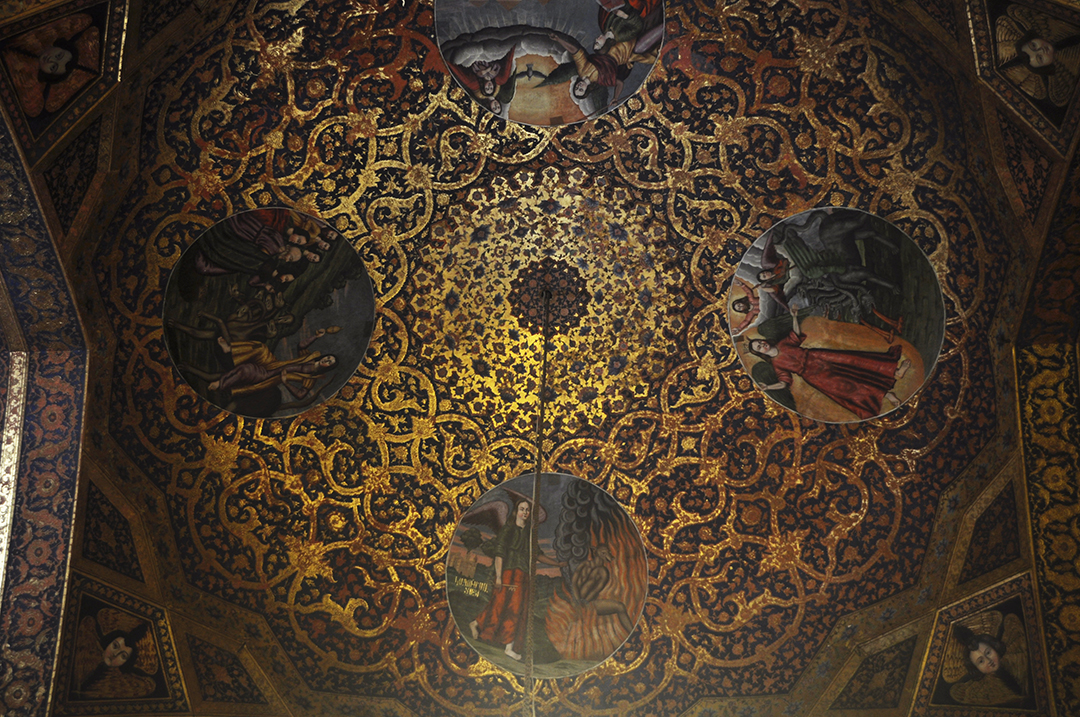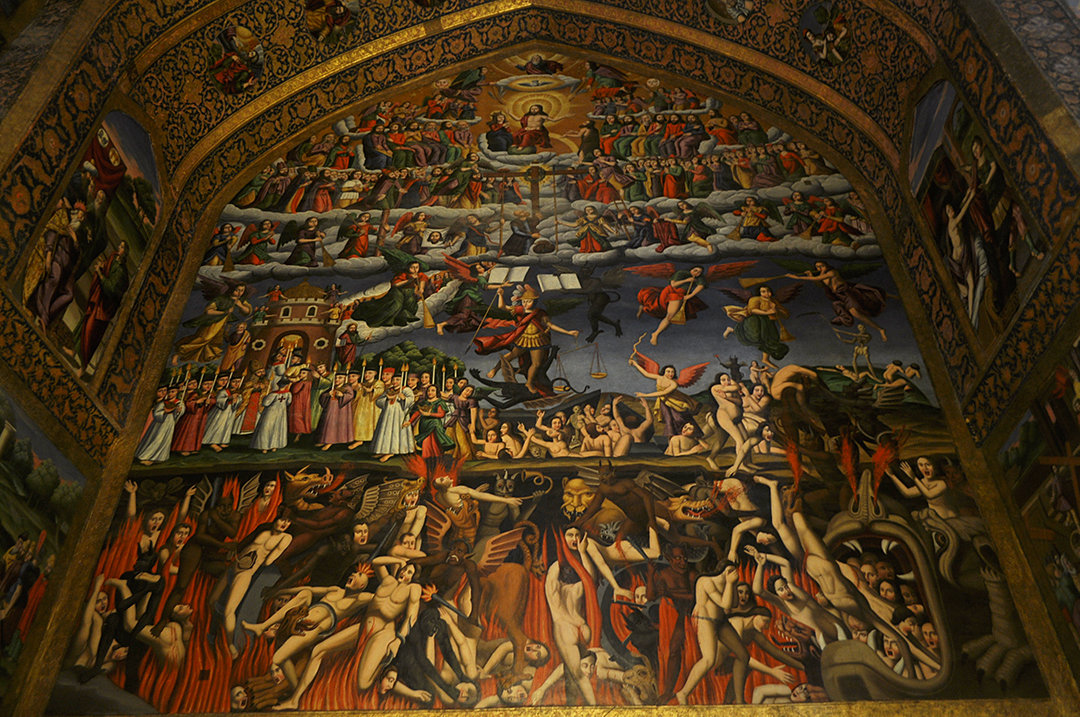Vank Cathedral is one of the many churches in Iran’s prosperous and very prominent Armenian Christian city of New Julfa The monument is a mix of many architectural styles and is a visual treat to all.
As the morning strikes, many tourists in Ishfahan take the road to see the world famous sight of Sio-Seh Pol bridge on the Zayandeh river while we took a turn to the other bridge and crossed over to enter New Julfa. It is one of the biggest settlement of Armenian Christians in the country. Situated south of Isfahan and named after the Julfa region of Armenia, this city was inhabited mostly by the residents of that region. Settled in 1606 by Shah Abbas I, one of the most influential rulers, New Julfa is one of the largest Armenian christian colonies in the world now.


Residing on the southern side of the river, this town has 16 churches and we visited the Church of Saint Joseph of Arimathea or better known as Vank cathedral. Built in 1664-66 this church is a classic mix of Armenian, Iranian and European architectural styles. Construction of outer walls is made up of sun dried bricks and keeping in with Iranian style plain exterior walls.



As we enter into a big courtyard, on the right side is the bell tower which has a very early European conical dome supported on arched pillars. The whole courtyard is scattered with several small buildings is a blanket of plain yellow brick stoned walls. As we turn towards our left and enter the church suddenly we are taken into a vibrant colourful biblical world.

The interiors of the cathedral are covered with fine frescoes. Compared to the sun kissed plain brick walls outside, inside it’s an explosion of colours as we step in. One can see the influence of Persian art in the delicately painted florals in blue and gold. The lower walls have mostly floral motifs drawn in Persian style. As your eyes goes up, all the biblical stories come alive in vibrant colours that shine through the room. The dome is again a whole garden of blue and gold with the saints painted in four corners as four discs. One can’t help but stop and look at those frescoes and get lost in the garden of biblical stories until your neck starts straining and you are forced to walk out to straighten your neck.




We come out of the church and walk into a museum. This museum houses a whole world of Armenian christian culture. Known for their business acumen, the Armenians were established by the Iranian Safavid rulers to help prosper trade and were given much freedom. This museum showcases brilliant examples of the Armenian script and the remains of the first language printing press that was ever established in Asia.


Khachatur Kesaratsi, an archbishop in this town, and his team imported parts of the printing machine from Europe and without any help or blueprint assembled it for two years. They carved their own letters and even made their own paper. Thus the first printing press in a language was started by Armenians and the first work came out in 1638. Also this was the first publishing house of Iran. Kesaratsi’s statue stands at the square opposite side of the Vank cathedral. Also his bust is on the left side of the entrance to this museum. To the right side of the musuem is stands the bust of Mesrop Mashtot, the inventor of the Armenian alphabet.

Armenian costumes, daily usable items and many books and paintings are on display in here. While we look through all the shelves gifts and other items that are showcased, one can see that they had strong trade relations with India.




One section in this museum is dedicated to the Armenian Genocide history . There is a whole section of books on Armenian Genocide, very little of which is spoken off anywhere else. Its interesting to read all the facts here because very few places in the world give such detailed accounts of killing and migration of Armenians christians around the world.

As we walk out of the church, we to go walking behind it and explore the old quarters. Much like any other Iranian city old quarter this one has small criss-crossing lanes that makes one gets lost in another chapter of history.

Armenians dress very much like the rest of he Iranians, just a few can be seen without headscarves. As we walked out of the lanes of Julfa and entered the new city streets and after another ten minutes walk we reach the river bank, it seems the Iranian culture and lifestyle seems to have blended seamlessly into the Armenian culture. The only divide here is the geographical one and that’s the river.



Love it!
LikeLike